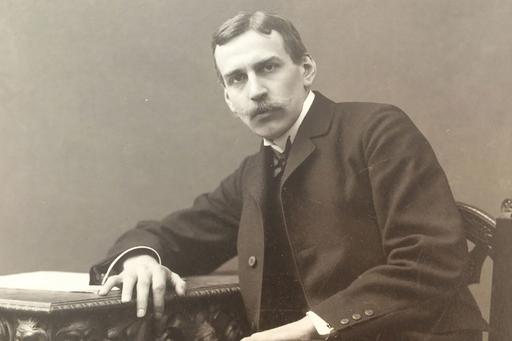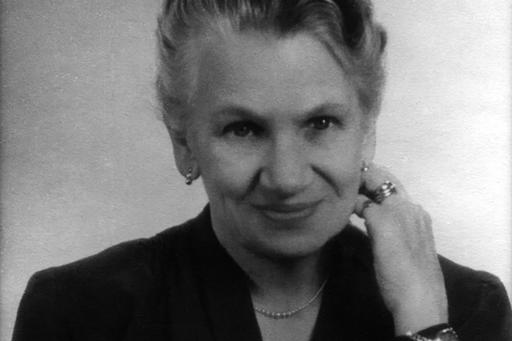History
The Academy of Music and Drama was inaugurated on July 1, 2005 when the School of Music as it used to be, the School of Opera and the School of Theatre all joined together as one Department. However, music educations and educations for the stage - more about the later ones further down the page - all have long histories in Gothenburg.
The History of Higher Music Education in Gothenburg

In 1916, the Göteborgs orkesterskola (Gothenburg Orchestra School) was founded, closely linked to the Gothenburg Orchestra Association, which later became the Gothenburg Symphony Orchestra. The composer Wilhelm Stenhammar, who had been the orchestra's first conductor since 1907, was also responsible for the orchestra school's activities. The teaching staff consisted of the concertmaster and the principals. The course cost 75 SEK per term, but many students received financial support from the city's patrons. There were about ten men and two women, and the most talented students took part in the orchestra's concerts. In recent years the link with the Gothenburg Symphony has been maintained and strengthened.
From 1954, the college was called the Gothenburg Music Conservatory and four years later it was given a government grant. In 1971, the conservatory was nationalised and its name became The School of Music in Gothenburg (Musikhögskolan i Göteborg) with about 100 students and its own right of examination.
The School of Music was incorporated in the University of Gothenburg in 1977.
During the 1980s, the Diploma course was added and the Department of Musicology became a section within the School of Music. The artistic-creative version of postgraduate education in Musicology was established at the same time as a postgraduate specialisation in music education started to develop.
The 1990s involved expansion, including the programmes and courses for music teachers, the awarding of the first artistic-creative degrees, and the School of Music moving from previous quarters in nine different buildings into one building, Artisten. The School of Theatre of that time also moved to Artisten, as did the sections for Cultural Sciences, Drama and Film Studies. In 1997, Musicology once again became an independent department within the Arts Faculty and moved out of Artisten along with Cultural Sciences, Drama and Film Studies. In 2000, the Faculty of Fine, Applied and Performing Arts was created, gathering together all the artistic schools and colleges at the University of Gothenburg and starting its own Faculty Office at Artisten. The Faculty Office moved out in 2004.
The History of Education for the Stage in Gothenburg

A Drama College was started in 1941 in Gothenburg. Its name was Maria Schildknecht’s Drama Academy and it offered two-year courses. Among the first pupils were for example Gertrud Fridh and Gösta Prüzelius.
The Academy was annexed to the Drama School of the Gothenburg City Theatre (Göteborgs Stadsteater) in 1947. It then started to recruit a slightly smaller number of pupils every year. Their education was extended to a period of three years.
The next big change in the daily functioning of the school occurred in 1964 when it became an independent college directly subject to the Department of Ecclesiastics of that time. It was given the name The National Theatre Academy in Gothenburg (Statens scenskola i Göteborg). At the same time the Academy acquired its own independent premises and the link with the City Theatre came to an end. At this point, a three-year opera programme was also started.
In 1966, Yat Malmgren from the Drama Centre in London was invited to the Academy as a guest teacher in theatrical production. He taught a special technique that he called "action" and that is still one of the foundation stones of the education at the Academy. Nowadays it is called creative improvisation.
In 1977, the Academy became a Department at the University of Gothenburg. It later changed its name to the School of Theatre and Opera. The functioning of the School was only minimally affected by this restructuring.
In 1992, a one-year Musical theatre course was started on trial at the School. It later developed into a permanent three-year programme, at first with auditions every other year, and every year as from 2005.
In 1992 the Academy moved from Lilla Torp to the newly-built premises in the Artisten building, where the School of Music was also housed.
In 2003 the Opera study programme became an independent department.
The Directors of the School through the years have been Maria Schildknecht, Karl-Magnus Thulstrup, Ola Nilsson, Lars Barringer, Bo Swedberg, Frantisek Veres, Harald Ek, Gugge Sandström, Iwar Bergkwist, Per Nordin and Pia Muchin.
Of those who have graduated from the Academy during the years we may mention, among others, Gunnel Lindblom, Ulla Jacobsson, Sven Wollter, Lena Söderblom, Thommy Berggren, Ingvar Hirdwall, Kent Andersson, Lennart Hjulström, Hans Josefsson, Lars-Erik Berenett, Göran Stangertz, Gunilla Nyroos, Viveka Seldahl, Helena Döse, MariAnne Häggander, Suzanne Reuter, Nina Gunke, Samuel Fröler, Maria Lundqvist, Anders Ekborg, Robert Gustafsson, Regina Lund, Mattias Andersson, Shanti Roney, Ola Rapace, Christer Nerfont, Julia Dufvenius, Stephen Hansen, Sara Sommerfeld and Camilla Tilling.